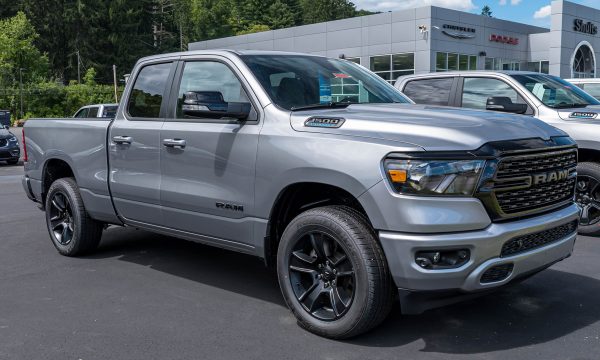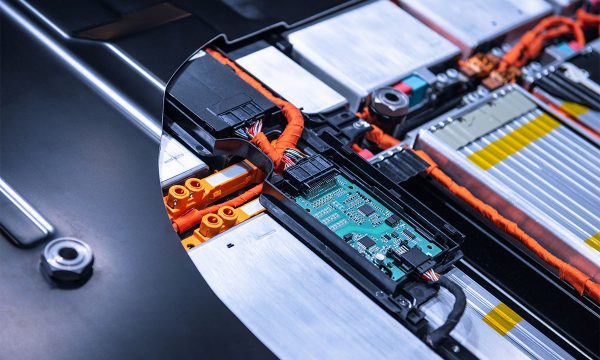There’s a disconnect between government mandates and the support needed to achieve them
This is because most of the announcements related to the auto sector had been previously telegraphed through the 2030 Emissions Reduction Plan (ERP), released with much fanfare by Environment and Climate Change Canada Minister, Steven Guilbeault, at the GLOBE conference in Vancouver on March 29th.
The ERP included $1.7B to re-fund the Incentives for Zero Emission Vehicles (iZEV) program through to 2025. This program is administered by Transport Canada, and while funding has been extended, changes to the program, including both increases to the MSRP eligibility limits and overall incentive amount, were not contained within that document. Despite suggesting that the budget would provide more details, there was only a further promise in the budget that details would be forthcoming.
Now, the government will be spending $200 million more in incentives and $200 million more for charging infrastructure to install the same 50,000 chargers—which had been the platform’s original goal.
The ERP also included two tranches of spending for ZEV infrastructure—EV chargers and hydrogen fuelling stations. The Canada Infrastructure Bank will provide $500 million in urban and commercial fuelling and charging infrastructure while NRCan will spend $400 million to build out suburban and remote infrastructure.
That said, the Liberal platform trundled out ahead of last fall’s election noted that their intention, if re-elected, was to spend $1.5 billion in incentives and $700 million to build 50,000 charging stations.
Now, the government will be spending $200 million more in incentives and $200 million more for charging infrastructure to install the same 50,000 chargers—which had been the platform’s original goal.
I guess the extra $400 million in iZEV incentives and money for charging infrastructure is to somehow attempt to deflect from the fact that the ERP also made ZEV targets significantly more stringent as well.
Now, Canada will have a “mandated” 20 per cent ZEV target for vehicle sales in 2026 and a target of at least 60 per cent by 2030. This target was increased from 50 per cent ZEV sales by 2030 as announced last November at the UN Climate Change Conference of the Parties in Glasgow, and that target substantially increased the previous target of 30 per cent ZEV sales by 2030.
So, in a very short period of time Canada has essentially doubled its target for ZEV sales by 2030. While things are moving very fast in the EV space, it is crazy to believe that the basic fundamentals have been altered that much over the course of less than a year that warrant a doubling of a ZEV target that has also gone from a 30 per cent “aspirational” target to a 60 per cent “mandated” target.

We don’t know what a “mandated” target means either.
The government signaled its intent to introduce a national zero emission vehicle sales mandate in the ERP but we have no further elaboration with respect to what that might look like at the moment, or when it might actually be implemented but, based on the wording of the ERP, it would need to be in place for 2026.
That may seem like it is a long way out, but 2026 is essentially tomorrow in the automotive industry. Product plans for 2026 are already locked and loaded, and companies’ product planners are currently working on 2030 model mixes. Thus, lead-time is one thing that the industry and government are going to need to dialogue on if there is to be any reasonable hope of meeting these targets.
The ERP also outlined a plan that would also move the medium and heavy-duty vehicles towards zero emissions by establishing a 35 per cent ZEV sales target by 2030 and a regulated 100 per cent ZEV sales target for medium and heavy-duty vehicles by 2040—depending on feasibility.
This effort will be supported by a $547.5 million purchase incentive program for medium and heavy-duty vehicles along with almost $200 million to retrofit vehicles currently on the road and almost $34 million for hydrogen trucking demonstration projects.
In my view, the focus on the medium and heavy duty space is one where the vast majority of the resources available for the transition to decarbonized transport should be focused. If we consider that a consumer opting to get rid of their reasonably efficient ICE vehicle to take advantage of the $5,000 federal incentive which is also stackable on top of any provincial incentive, to purchase a ZEV—the reality is that either way that vehicle is going to sit parked somewhere 95 per cent of the time.
The $1.7 billion for incentives will only support the sale of 340,000 ZEVs through 2025 and when applying reasonable market growth and reasonable ZEV adoption growth, we could anticipate 869,500 ZEVs being sold between now and then, but that’s based on ZEVs either still being incentivized or ZEVs being cost competitive with ICE vehicles.
Thus, the real opportunity to reduce emissions is to focus ZEV technology and uptake on the medium and heavy-duty commercial fleets that actually have an incentive to look at the total cost of ownership—unlike passenger vehicle consumers. Commercial vehicles also tend to have a much higher utilization rate than passenger vehicles meaning that the opportunity to reduce emissions is that much greater.
That said, there is no reference to “feasibility” in relation to the mandated targets that have been set for the passenger car and light-duty trucks. And while the numbers in the 2030 Emissions Reduction Plan echoed in the budget seem impressive—$1.7 billion for incentives, and $900 million in charging and fueling infrastructure, the real question to ask is—compared to what?
The $1.7 billion for incentives will only support the sale of 340,000 ZEVs through 2025 and when applying reasonable market growth and reasonable ZEV adoption growth, we could anticipate 869,500 ZEVs being sold between now and then, but that’s based on ZEVs either still being incentivized or ZEVs being cost competitive with ICE vehicles.
Cost parity is not expected until very late this decade so the $1.7 billion earmarked for incentives sounds like a lot, but it is only going to support about 40 per cent of the vehicles that will need to be sold over that period or on the road to get to the mandated 20 per cent of all sales by 2026.
Likewise, the $900 million to put in place 50,000 EV chargers and fueling stations seems like both a lot of money and a significant number of charging stations (considering Canada only has about 16,000 right now) but consider that if we take a widely accepted ratio of having one charging station available for every 10 EVs on the road (more advanced jurisdictions have ratios of 1:7), that still means we’ll need about 87,000 charging stations for those vehicles that will be sold between this year and 2025, and if you are looking to accommodate the existing EVs currently on the road in Canada, that number is over 100,000 charging stations.
So once again, the government is supporting less than 50 per cent of the infrastructure that will be required to accommodate all of the ZEVs the government is going to require vehicle manufacturers to put on the road.
In the end, while the industry is committed to 100 per cent decarbonization of their products, the government has created aggressive, mandated targets for the industry that it is less than 50 per cent committed to supporting in terms of addressing the two key barriers that are keeping consumers out of the transition to ZEVs—price, and reliable, available Infrastructure. I don’t like those odds.











